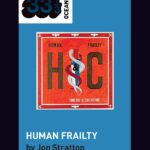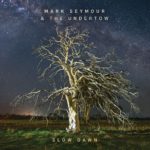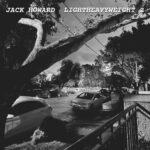Living In Large Rooms Review
Furia/The War Against Silence review. A good detailed review from an American perspective.
Author: Glenn McDonald.
Date: 18 July 1996.
Original URL: http://www.furia.com/twas/twas0077.html
The application for a rock band license in Australia and New Zealand must include some blanks for sibling endorsements that aren’t present in the American version. In addition to the obvious other Finn, Crowded House’s bass player, Nick Seymour, is the brother of Hunters and Collectors’ singer Mark Seymour. Somewhere I even have Crowded House covering H&C’s trademark anthem “Throw Your Arms Around Me”. Disappointingly, perhaps, this two-disc Australian Hunters and Collectors live album doesn’t feature any Crowded House covers. Then again, perhaps it’s just as well. Crowded House’s gentle reworking of H&C’s storming love theme was electrifying in its restraint, but subjecting Crowded House’s meticulous trio pop songs to H&C’s pack-the-stage volubility might easily come off as unpleasantly brutal.
Like Crowded House, Hunters and Collectors are, in my opinion, unrivaled masters of a particular song form. They do catharsis. Every H&C song has the same aim, which is to make you simultaneously sweat like you’re being wrung for humanade, and howl like a Valkyrie in a stretch limo is swooping toward you with your name on a golden airport placard shining like the sun. Whatever the lyrics actually say, the message in all these songs is either “It’s over and we won”, or “It’s not over yet, and we’re damn well going to win before it is”, and in good Ouroboros style, the distinction between the two is frequently trampled on with gusto. The Alarm were good at this, too, in their day, but H&C makes them sound like Frippertronics. Part of it is Seymour’s bar-fight delivery (he sounds like he’s on the verge of voice death even in his best moments, and hearing him fight through a throat infection on the first disc is awe-inspiring), and part of it is the fact that there are practically more people in H&C than there were in the Alarm’s whole hometown, so that I get the distinct impression they could form a decent-size uprising without even resorting to outside recruiting. And part of it, too, though maybe this shouldn’t matter, is that the Alarm are gone, and they went messily, without the good sense to quit before they embarrassed themselves, while H&C, despite some problems getting distribution here in the US, have soldiered on for eight or eleven albums, depending on how you count, as if there really is no force that could deter them.
This double-disc set’s ostensible organizing rationale is that the first one was gleaned from three nights at a small Melbourne cafe, while the second came from “venues with full scale production”. Don’t bother expecting MTV-Unplugged-style acousticity out of the first half, though. You could lock H&C in a closet with nothing but picnic plates for gear, and they still wouldn’t sound unplugged. Somehow they’d figure out how to convert static electricity into overdrive, and make trumpets out of the plates, and your neighbors would be phoning the police before you could cram a sheet of Bounce into Seymour’s mouth. Yes, technically there are acoustic guitars in some places on the first disc where there would normally be electrics, but no mere instrumental substitution can alter H&C’s emotional palette much. Any venue large enough to fit the whole band at all is large enough for them to transform into a virtual arena by their very presence. Still, the Continental songs are notably rawer and the frayed state of Seymour’s voice is arresting, while the “full scale” songs sound a bit more like you’re hearing them from the back of a very large crowd, with some of the protection from their intensity that that distance affords, and the contrast of these makes the halves an interesting pair.
The bulk of this material is drawn from 1994’s Demon Flower (the choppy we-survived-our-brush-with-evil anthem “Courtship of America”, the squarely mid-tempo “Betrayer”, the prison-guard’s-home-life song “Back in the Hole”, and the scornful slow-brass meditation “Ladykiller” on the first disc, the bluesy ballad “Mr. Bigmouth” and the raspy “The One and Only You” on the second) and its predecessor, 1992’s Cut (the amiable “True Tears of Joy” on 1, the chattering dance track “Head Above Water” and the eminently arena-scale “Where Do You Go?” on 2). Both discs also have versions of Human Frailty’s angular lead track, “Say Goodbye” (the first disc actually has two), and Cut’s buoyant single “Holy Grail”, which seem to have become the band’s dual standard-bearers, and Demon Flower’s cartoon-blues opener, “Easy”. The rest of the first set has the immortal “Throw Your Arms Around Me”, from 1986’s Human Frailty, the similar “When the River Runs Dry” from 1989’s Ghost Nation, and a lone track, “The Slab”, exhumed from the early album The Jaws of Life. The second disc pulls out two more old ones, “Chalkie” and “42 Wheels”, and then moves on to Human Frailty’s wistful “Stuck on You” and desperate “Everything’s on Fire”, Fate’s pounding “Do You See What I See?”, and Ghost Nation’s deliberate “Blind Eye”. Human Frailty and Fate were the albums I discovered H&C with, so naturally I miss some of my other favorites from them, like “January Men”, “Back on the Breadline”, “Faraway Man” and especially the harrowing war song “What’s a Few Men”, but the token treatment of the disappointing Ghost Nation and the somewhat unapproachable early albums seems about right. And while it’s sad that the US seems to have left H&C behind, it’s encouraging that the feeling appears to be mutual.
Now, on to the next one.
N/A.





